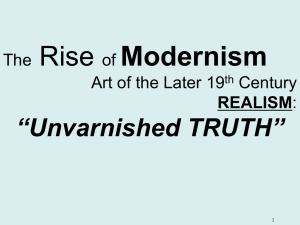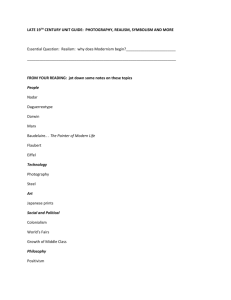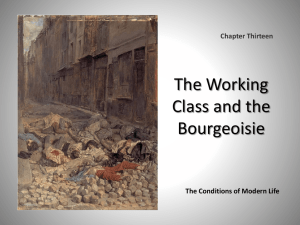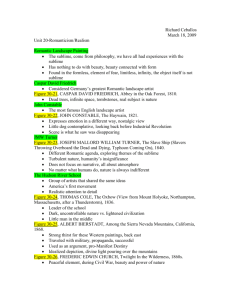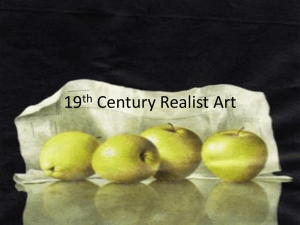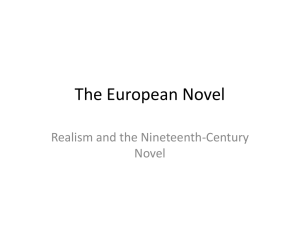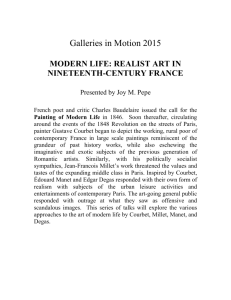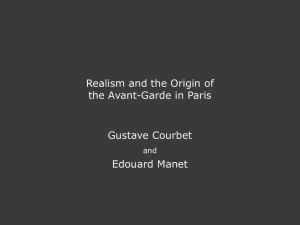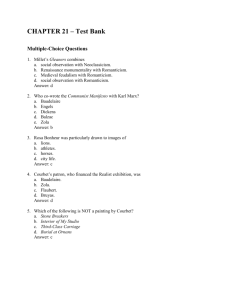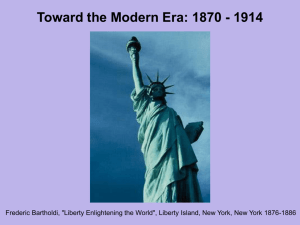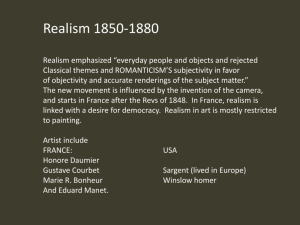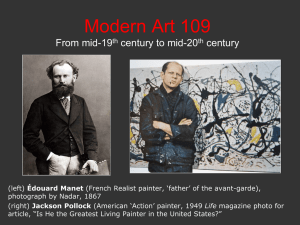Art History _lecture #1_Realism to Early Impressionism_blog
advertisement
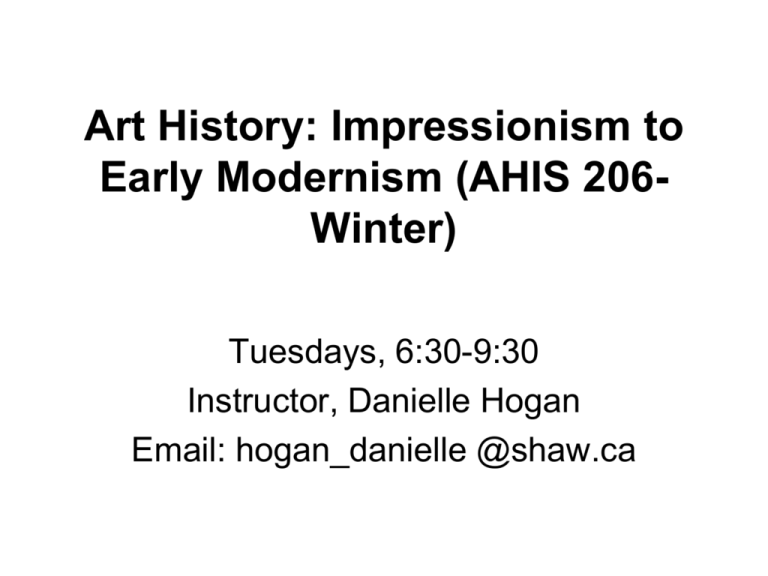
Art History: Impressionism to Early Modernism (AHIS 206Winter) Tuesdays, 6:30-9:30 Instructor, Danielle Hogan Email: hogan_danielle @shaw.ca Fresh Eyes Impressionism (1860’s-1886) Realism (1850-1900) Romanticism (1800-1850) Neoclassicism (1780 – 1820) Rococo era (1723-72) Baroque art (1600-1750) Pre Baroque? Yup, lots more great art. But we aren’t covering that… Impressionism...how did we get here? ‘Realism and the Birth of Impressionism ’ Realism In a sense, Realism had always been a part of Western art. During the Renaissance, artists overcame all technical limitations and represented nature with photographic accuracy. From van Eyck to Vermeer to Velazquez, artist approximated visual reality with consummate skill. But before Realism, artist in the 19th century modified their subjects by idealizing or sensationalizing them. The ‘new’ Realism insisted on precise imitation of visual perceptions without alteration. Realism’s subject matter was totally different. Artists limited themselves to facts of the modern world as they personally experienced them: only what they could see or touch ws considered real. Gods, goddesses, and heros of antiquity were out. Peasants and the urban working class were in. In everything from colour to subject matter, Realism brought a sense of muted sobriety to art. -The Annotated Mona Lisa French Realism Literary Art Honoré de Balzac 1842 French Realism Visual Art ‘Show me an angel and I’ll paint one.’ - Courbet Bonjour, Monsieur Courbet, 1854 Gustave Courbet “I am fifty years old and I have always lived in freedom; let me end my life free; when I am dead let this be said of me: 'He belonged to no school, to no church, to no institution, to no academy, least of all to any régime except the régime of liberty.' [1] Gustave Courbet, The Artist's Studio; A real allegory summing up seven years of my artistic and moral life, oil on canvas, 1854-55 (Musée d’Orsay, Paris) Gustave Courbet A Burial at Ornans, 1849-1850, oil on canvas, 314 x 663 cm Gustave Courbet The Oak at Flagey (The Oak of Vercingetorix) 1864 Oil on canvas, 35 x 43 3/8 in (89 x 110 cm) Gustave Courbet The Stormy Sea (or The Wave) 1869 Oil on canvas 3' 10" x 5' 3 1/2" (117 x 160.5 cm) Gustave Courbet The Cliff at Etretat after the Storm 1869 Oil on canvas 52 3/8 x 63 3/4 in (133 x 162 cm) Gustave Courbet Sleep 1866 Oil on canvas Gustave Courbet Omnia vincit Amor, 1599 Agostino Carracci (Italian, Bolognese, 1557–1602) Engraving The Origin of the World 1866 Oil on canvas Gustave Courbet Early Impressionism Edouard Manet 1832-1883 Edouard Manet -arguably referred to as the Father of Modern Art -Manet’s work is difficult to classify, not quite a realist yet also not fully an impressionist. -He never exhibited with the Impressionists -Classically trained -Often borrowed from great master’s works (as we will see tonight) -What outraged the public and made him a hero to young rebels was his translating to Great Tradition into modern terms. Manet stripped away idealizing mythology to portray modern life candidly. -He alos eliminated the subtle glazing and detailed polish of academic technique. -many felt at the time that his sketchy brushwork gave his paintings and unfinished look. -History credits Manet with launching “the revolution of the color patch.” With this new technique, Manet suggested form through broad, flat, areas of colour. -The public was forced to look anew at the painted picture surface. Notes from, The Annotated Mona Lisa French Fashion Plate 1864 Olympia 1865 Oil on canvas Edouard Manet Venus of Urbino 1538 Oil on canvas Titian A Bar at the Folies-Bergere 1882 Oil on canvas Edouard Manet A Bar at the Folies-Bergere 1882 Oil on canvas Edouard Manet Las Meninas 1656 by Spanish Baroque artist Diego Velázquez Le Dejeuner sur l’Herbe 1863 Oil on canvas Edouard Manet Pastoral Concert C1510 By Italian Renaissance artist, Titian or Giorgione The Balcony 1868–1869 Edouard Manet
